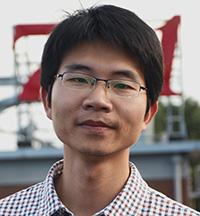Philippine president Rodrigo Duterte has been raising hackles across the Asia-Pacific since his inauguration in June. His Southeast Asian neighbors worry that he will unthinkingly upend the balance of power in the region, giving China both a boost in its quest to dominate the South China Sea and undue influence within the Association of Southeast Asian Nations (ASEAN). Japan shares similar geopolitical concerns. Washington, meanwhile, sees its forward defense perimeter—integral to defending the homeland since the close of World War II—at risk, to say nothing of its more recent “pivot” to Asia, an effort “to advance security, prosperity and human dignity across the Asia Pacific,” as President Obama put it in his 2011 speech to the Australian Parliament.
Even Beijing has exhibited some wariness towards Duterte. When asked about the president’s announcement of a “separation” from the United States, a Chinese foreign ministry spokesperson noted, “countries should not hold a cold-war or zero-sum mentality in today’s international relations.”
In sum, Duterte’s ham-handed pivot to China threatens to throw the region into disarray. In his latest broadside directed at the United States, Duterte once again asserted that he wanted all foreign troops out of the Philippines and that he would eventually nix the Enhanced Defense Cooperation Agreement (EDCA). Although such a move does not appear to be imminent, it is worth considering its potential implications for the region.
The EDCA provides the U.S. military access to a number of navy, army, and air force facilities in the Philippines. The EDCA’s final approval by the Philippine Supreme Court earlier this year paved the way for the U.S. military to establish persistent presence on the eastern edge of the South China Sea for the first time in over two decades.
Whether or not Manila wished to admit it, that presence had been sorely missed. After U.S. forces were ejected from Clark Air Base and Subic Bay in the early 1990s, China took advantage of the vacuum to advance its own interests. Most notably, in 1995 China secretly occupied and built an outpost on Mischief Reef in the disputed Spratly Islands. The reef, which The Hague’s Permanent Court of Arbitration recently found to be a low-tide elevation within the Philippine’s exclusive economic zone, has been built into an artificial island atop which sits a runway. According to the Asia Maritime Transparency Initiative, China is constructing reinforced hangars with space sufficient for 24 fighter jets and three or four larger aircraft.
It is impossible to know whether China would have neglected to take Mischief Reef—or, more recently, Scarborough Shoal—had the U.S. Navy and Air Force never been expelled from Subic and Clark. But we can safely say that China did not have to worry about American warships and aircraft being just a short sail or flight away; it would be folly to think that did not factor into Chinese decision making.
EDCA’s cancellation would complicate U.S. efforts to maintain persistent naval and air presence in the eastern and northern reaches of the South China Sea, once again providing China opportunities to act with greater impunity. For Duterte to terminate EDCA, moreover, would be to signal Beijing—intentionally or otherwise—that defense of disputed maritime territory is not a priority for his government.
Indeed, despite Duterte’s attempts to “make nice” with Beijing, Xi Jinping might be tempted to accelerate plans to fortify Mischief Reef and to commence dredging at Scarborough Shoal. Xi might assess that the Philippines would not put up a fight—in large part because Duterte has, at times, said as much—and that EDCA’s fate and Duterte’s repeated anti-American vitriol would create domestic political hurdles in the United States even if Manila did call on Washington for assistance.
The threat to EDCA also comes at a time when the Armed Forces of the Philippines (AFP) is looking to move beyond bilateral training exercises with its American counterparts and to engage in more operational cooperation. In recent interviews in Manila, a variety of scholars and government officials made clear that the Philippines wants to see the alliance evolve along similar lines as that between the United States and Japan, with a defined division of roles and responsibilities. EDCA provided an opportunity to spur such an evolution as the agreement promised to accelerate the AFP’s fielding of a minimum credible deterrent by providing opportunities for more frequent, deeper military-to-military engagements. Withdrawing from EDCA would retard that progress, once again leaving the Philippines exposed to Chinese depredations.
Australia, Japan, and perhaps South Korea could help fill this void by deepening their own engagement with the AFP, which the United States should support. China, however, would look askance at, and seek to deter, such a development. Heightened tension between China and the U.S. alliance network could result from EDCA’s demise.
The implications of an EDCA cancellation, moreover, would extend beyond the South China Sea. As Malcolm Cook recently pointed out in the New York Times, for China’s new nuclear-armed ballistic missile submarines to “pose a first or second strike threat to the continental United States, they must transit the South China Sea and enter the Western Pacific,” most likely through the Luzon Strait. At present, EDCA puts U.S. forces in an ideal position to monitor and project power into the strait. The only effective alternative location from which to do so is Taiwan. In the wake of EDCA’s termination, Washington would be loathe to pursue that option as it would seriously complicate US-China and cross-Strait relations, but American leaders might also assess that defending against the Chinese nuclear threat is an overriding priority.
Fortunately, EDCA’s termination remains unlikely at this time. Aside from the mutual defense treaty itself, EDCA is Duterte’s greatest piece of leverage vis-à-vis China. He will not be quick to bargain it away.
Perhaps more importantly, Duterte faces significant domestic constraints on his ability to distance the Philippines from its American ally. Public opinion polling shows the Philippines to be the world’s most pro-American country (Filipinos view the United States even more favorably than Americans do), and also deeply distrustful of China. There are deep, long-standing institutional and personal relationships tying together the allies’ foreign policy, defense, and military establishments. The Department of Foreign Affairs, Department of National Defense, and AFP are not outwardly defying Duterte, but they are deeply invested in the alliance and continue to seek ways to enhance it.
Duterte, of course, knows this. His promises of pay raises and new handguns for soldiers are part of an effort to keep the military onside. Any move that alienates the AFP and the Manila elite could lead to agitation for a change in leadership before the end of the president’s six-year term.
Does Rodrigo Duterte want American troops out of the Philippines even more than he wants to remain in Malacañang Palace? Only time will tell.



